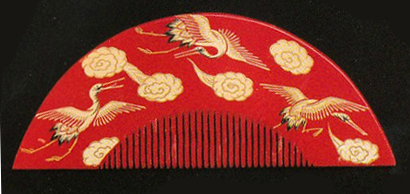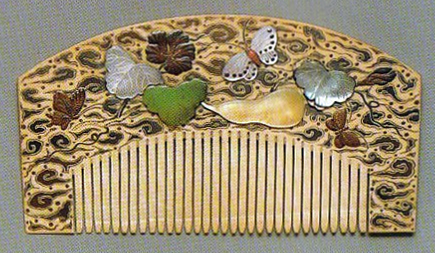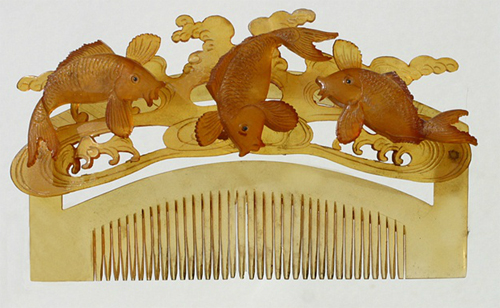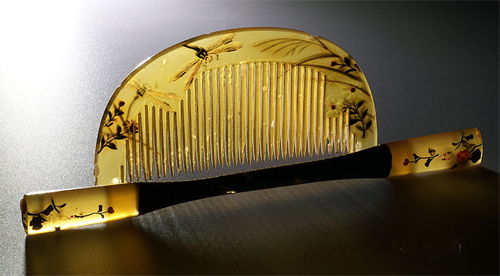In the Edo and Meiji eras, kushi became canvasses, on which artists could paint or carve cultural and religious symbols. Early Edo kushi had only one simple idea on a large comb-canvas. Late Edo kushi were still bigger than Meiji pieces, but both eras produced square and half-moon shapes.
From the Okazaki collection come these two Edo kushi: The first is painted red lacquer with white cranes. The crane symbolized freedom and was a balance to Minogame, the old tortoise who symbolized longevity and stability. Both symbols are important at weddings.

The second is an square-shaped ivory kushi with mother-of-pearl decorations including a pear, leaves, and a butterfly.

From the Miriam Slater Collection comes this tortoiseshell Edo kushi with a relief sculpture of three carp…

…and this late Edo set depicting the gifts of the seven gods of fortune: health, longevity, happiness, victory in war, knowledge, art, and wealth.

In the Meiji Era, artists sunk jewels into their tortoiseshell kushi, such as these amethyst leaves and flower from the Belva Green collection.

The Creative Museum just acquired this set with painted dragonflies on a lake, bordered with flowering trees. A set like this would very likely been seen in France, as the dragonfly is one of the landmark themes of Art Nouveau.

कंघी
For more scholarly research, please examine The Creative Museum’s exhibition Chine et Japon: A Fleur de Tete and Okazaki Collection: Combs and Ornamental Hairpins (Japanese Edition)
You are also welcome to examine these books:
 Okazaki Collection: Combs and Ornamental Hairpins (Japanese Edition) |
 Japanese Kimono Hair Comb – The Museum Collection (Japanese Edition) |
 The Comb: Its History and Development |
